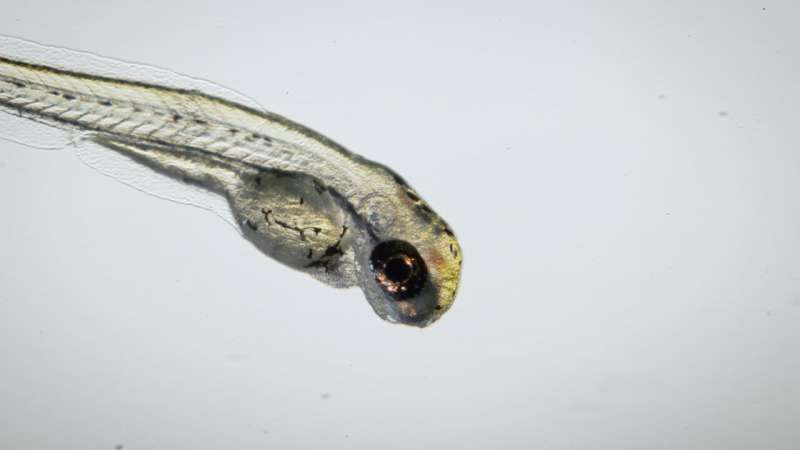This article has been reviewed according to Science X's editorial process and policies. Editors have highlighted the following attributes while ensuring the content's credibility:
fact-checked
trusted source
proofread
From a fish to a dish, how animal alternatives are advancing stroke research

Scientific research involving animals is a vital tool for understanding and treating diseases; scientists can recreate aspects of human diseases and investigate how the complicated array of body systems respond. Nevertheless, it is an ethical question that divides opinion, and many scientists are now working on the three Rs of animal research: to reduce animal numbers, replace them wherever possible and refine techniques to prevent animal suffering.
There is a whole field of science dedicated to this approach; finding alternative models in lower order species, building predictive AI models of cellular processes, sharing tissues from the same animal across disciplines, and informing pre-clinical studies in a "bedside-to-bench" approach. At The University of Manchester, scientists have developed new models to investigate brain hemorrhages that would replace the use of mammals in early studies.
Hemorrhagic stroke is a leading cause of death and disability worldwide but scientists still do not fully understand when or why it happens, or how to treat patients afterward. These questions can only be answered in the lab and due to the complex interactions between blood, brain tissues and immune cells this has mostly been performed in mice, rats and other mammals.
Mammalian models are excellent systems to study brain hemorrhages, as they have brains and interacting circulatory systems that look quite similar to a human. However, it is difficult to generate a reliable brain hemorrhage in a rodent without surgery, which is very technically demanding and time consuming and therefore impossible to scale-up to screen hundreds of drugs to identify a potential therapy. If scientists are to find a potential therapy for those patients who have suffered from a stroke, such an approach needs to be possible.
New alternative models used at The University of Manchester include a larval stage zebrafish and a human cell system, using a seaweed polymer to hold blood in culture. Both approaches offer alternatives to mammals, and will add to the toolkit scientists can use for pre-clinical study of brain hemorrhages. Each model has different advantages. Up until five days old, larval zebrafish are not a protected species under U.K. legislation because they are not capable of independent feeding, and so are a replacement for protected species like mice and rats.
A larval zebrafish is very small so we can study many individual animals at one time meaning that we can get results that are more reliable from experiments. They are entirely see-through at these early development stages, so visualizing the blood in the brain can be performed non-invasively as there is no skull. As fish lay their eggs externally, collecting the embryos from the mating pair is also a non-invasive procedure, and we can easily generate genetic modifications that will mimic human diseases.
One such modification is a mutation in a gene that results in brain hemorrhage. These larvae exhibit brain hemorrhage spontaneously at two days old, and regenerate their brain tissue recovering completely by early juvenile stages. This allows us to investigate the spontaneous nature of human brain hemorrhage, how the immune cells play a role in the brain in a live animal, and ultimately how they recover.
Although the zebrafish model replaces mammals in the lab, we still need to keep zebrafish adults in order to generate the eggs. For scientific work with a "three Rs" focus, our goal is to replace animals completely. We have taken one step toward removing animals in our work by developing a method to generate a human model in a dish.
Exposing brain cells to blood is toxic, and so to keep them alive to study them, we have developed an approach to contain the blood within a hydrogel to control the release of toxic factors. This allows for a viable cell system to investigate pathology and help answer questions such as which factors are causing damage to the brain tissue and could potentially be targets for drugs. Additionally, when we want to screen drugs for therapeutic use, this model is very easily scaled up, to apply hundreds of drugs at once.
The potential for these approaches as replacement models will only become a reality if other labs outside The University of Manchester start using them too, to complement their own mammalian studies. Our film captures the motivation and methodology for creating these models, to highlight their potential, and to encourage other stroke researchers to adopt them in their own approaches.




















